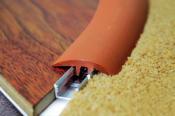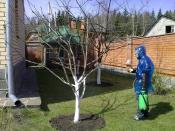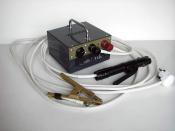Search
Login
Recommended
Ornamental plants in the garden. Thuja, how to choose the right, landing and care
Thuja is one of the brightest representatives of evergreen coniferous vegetation, which adorns suburban areas, city alleys and parks. A colorful plant came to us from North America and gained wide popularity among gardeners, summer residents and landscape designers.
A polymorphic plant has about 120 decorative forms, differing in the nature of growth, color, shape of twigs and needles. Therefore, choosing the type of thuja most suitable for the garden is not a problem. When buying, it is important to consider not only the external decorative characteristics of the plant, but also other parameters of high-quality planting material.
Content
- Thuja royal tree in the garden
- Types of thuja: general qualities and distinguishing features
- How to choose the right thuja for planting in the garden
- Thuja landing
- Features of gardening thuja care
- Thuya reproduction methods video
Thuja royal tree in the garden
When arranging a summer cottage, more and more gardeners use the queen of coniferous landscape trees thuja. In past centuries, thuja adorned palace parks, hedges were erected from it along the alleys.
Among the people, the title of the royal tree or the tree of life was entrenched in the thuja, because in addition to magnificent decorative qualities, the plant also has healing properties.

Almost all types of arborvitae are used in landscaping. Varieties of some plants that are more resistant to cold climates (Drum, Smaragd, Holmstrap) are more often used to create hedges. The height of the green fence can reach four meters, and the density will depend on the distance between the stands.

Thuja maintains its color throughout the year, so a garden plot with a green hedge will look neat and well-groomed even in winter.
Other representatives of the arborvitae are spherical, dwarf varieties (Khoseri, Danika, Little Dorit), planted in rock gardens and rockeries. Such arborvitae do not grow more than 80 cm, and harmoniously fit into the overall garden composition and bring a peculiar southern flavor.

Solitaire shrubs (Kornik, Sankist) look more advantageous in single plantings, have a beautiful shape and are able to revive any corner of the garden plot.

Types of thuja: general qualities and distinguishing features
All types of thuja have some common advantages and characteristics:
- like all conifers, thuja throughout the year pleases with its greenery and splendor;
- the ability to purify air and enrich it with oxygen;
- a green hedge planted from thuja drowns out the noise;
- thuja is a relatively unpretentious plant;
- good frost resistance and resistance to temperature extremes;
- the bark does not rot;
- quick recovery after cutting;
- pleasant aroma.
Along with general qualities, each species of arborvitae has its own distinctive features. Consider the most common varieties of the royal tree.
Thuja western the most popular species among gardeners and gardeners, due to its unpretentiousness and winter hardiness. This tree is a long-liver (some plants live about 1000 years). Thuja western has needles of dark yellowish-green color with resin glands. Among the decorative forms of this species, plants having a spherical, pyramidal and columnar shape are most valued.

Landscape designers often use dwarf, undersized varieties of western arborvitae or trees with a weeping crown for planting.
Thuja eastern (biota) has fan-shaped branches. The height of the tree can reach 20 meters, but there are dwarf decorative varieties of oriental thuja. Thuja branches are located in a vertical plane, the color of the needles is green.

Thuja eastern is more thermophilic, tolerates dark places well. The peculiarity of this type is its healing and medicinal properties (it freshens the surrounding air and kills some pathogenic microbes).
Thuja folded (giant) has horizontal branches, conical shape, dark green needles with a pungent odor. The height of the tree reaches 60 meters, diameter up to 2 meters. The plant does not tolerate severe frosty winters, is thermophilic and sensitive to soil composition (prefers well-moistened fertile soils).

Japanese thuja It has soft needles of multi-colored color: the upper part is green, and the lower with white spots. Thuja is completely unpretentious, drought- and frost-resistant (it can take root behind the Arctic Circle). The only condition for good and long-term growth is clean air, so the Japanese thuja poorly takes root in the parks of big cities.
Thuja Korean almost unsuitable for growing in open ground in central Russia, as it does not tolerate cold. The crown of Korean arborvitae is wide with sprawling branches; soft needles of multi-colored shades (from bright green to silver).

How to choose the right thuja for planting in the garden
In order for the thuja to look appropriately and fully developed in landscape design, it is necessary to evaluate the general condition of the summer cottage (soil, shade) and the climatic features of its region (average rainfall, severity of winters) before buying.
Based on the data listed, you need to decide on the most suitable type of thuja, after which you can go to buy a seedling. Be sure to inspect thuja, so as not to acquire a sick or weak plant.

- The needles of a healthy thuja should not break or crumble.
- If the earthen lump is overdried, it is necessary to refuse to buy such a seedling, since irreversible processes could occur in a coniferous plant during drought, and it will not be possible to defuse the thawed one.
- If possible, you need to evaluate the root system: the tips of the roots should be juicy and have a slightly yellowish or white color.
- You should not buy a seedling whose roots are too bare, they could be damaged.
- The roots should not be chopped off, otherwise the plant will not take root.
- It is necessary to carefully examine the trunk and crown of thuja for the presence of diseases.
You can plant young thuja seedlings throughout the year. However, it is better to do this in the spring, so that the plant has time to take root and get stronger before the onset of the first autumn frosts.
Thuja landing
For planting thuja, places located not in direct sunlight are suitable, this can weaken the plant's resistance to cold and reduce its decorative qualities. It is advisable that the royal tree is not in constant drafts.
The plant will quickly take root on light and moist soil, but on clay or dry needles of thuja, it will begin to turn yellow and dry.
Proper planting of young seedlings is the key to longevity and beautiful appearance of an adult thuja. How to plant plants, depending on their application in the arrangement of the garden?
- The distance between the trees when creating a single-row hedge is 1 meter, two-row 2 meters. For large varieties of thuja 5 meters.
- Depth of landing is about 70 cm.
- In the alleys, the distance between the trees is about 4 meters.

It is necessary to dig a landing pit of such a size that, when planting, the root neck of the plant remains outside, rather than deepening.
For successful survival of thuja, it is advisable to fill the prepared landing mixture with the following composition:
- 2 parts of leaf and turf land;
- 1 part of sand;
- 1 part peat;
- 500 grams of nitroammofox.
Fill the well with the mixture and plant a seedling. After this, the plant must be abundantly watered.
Features of gardening thuja care
Let us consider in detail how to grow thaw, following the basic rules for the care of conifers.
thuja watering and top dressing
The first time after planting (a couple of months), the thuja needs abundant watering of about 10 liters per seedling weekly. If the weather is dry, then watering should be increased (twice a week) and increased in volume (up to 20 liters). This is done so that the plant does not bear abundant large fruits that will reduce the attractiveness of the royal tree.
It is necessary to water the thaw in the evening or in the morning, so that the needles of the plant have time to dry, and the roots in sufficient quantities can be saturated with moisture.

Thuya loves sprinkling very much. Spraying can be carried out every day, it will strengthen the plant, wash away dust, dirt from the needles, so that the thuja can breathe easier, and physiological processes will proceed more intensively.
To stabilize the moisture regime, the near-stem circle of soil around the plant must be mulched with loose humus, compost or peat.
A beneficial effect on the development and growth of thuja top dressing and fertilizer the color of the plant becomes more vivid, frost resistance increases. In the spring or early June, it is desirable to introduce organic fertilizers for shallow digging. Thuja responds well to the application of mineral fertilizers: potash (ash) and nitrogen (saltpeter). Phosphate fertilizers for feeding thuja are rarely used, especially if the plant is planted in acidic soil.
thuja pruning
Thuja care involves decorative and sanitary trimming. In April, damaged branches should be removed from the plant, and a strongly thickened thuja crown should be slightly thinned out to improve air circulation and reduce the risk of diseases.
Rules for decorative trimming:
- trimming the top of the arborvitae corrects the direction of growth to the desired height;

- when forming a dense bush of a spherical shape, cut branches that differ from the total mass of shoots;
- systematically need to trim annual growth to maintain a given shape;

- full pruning is performed when extra green old branches appear;
- if you often have to adjust the form of thuja, then you need to reduce the amount of fertilizer applied.
Tui, which grow in the shade, do not need thinning, as they have a not too dense crown
thuja preparing for winter
Thuja in winter needs shelter only in the first year after planting, when the shoots of the plant are still very weak and thin. From non-woven material (lutrasil, spanbond, agrotherm), you can make a bag that is worn on thuja. It is important that such protection does not pull the needles.
For more reliable protection against snow and wind, you can make a frame of wood and install it around the plant. On top of the frame must be covered with a prepared bag. Such a shelter will not allow snow to accumulate on the top of the plant, and will protect young eyelids from deformation and breakdowns.

The root system of a young plant also needs warming. To do this, mix the leaves with the ground and cover them with soil around the trunk of the arborvitae. Warming will protect young roots from freezing and will retain moisture in the soil.
With the advent of spring, do not rush too much and remove the shelter. Tue needs time to adapt. Therefore, first on a cloudy day you need to remove the fabric bag, and after a few days and the wooden frame. Well, if at first the thuja will be in partial shade, you can build a small tent that will protect the plant from direct sunlight.
Winter care for adult plants involves the removal of excess snow from the branches of the thuja, so that the needles do not warp. Before the onset of the first frosts, thuja must be soldered to saturate the earth with moisture.
diseases and pests
Thuja phytoncidity provides the plant with protection against certain pests and protects against the occurrence of diseases. However, dustiness of air, damage to wood and needles reduce the durability of thuja.
The most common pests of thuja are:
- Juniper scabies affects the cones and needles of arborvitae. For prevention in the spring, you need to spray young shoots with intavir, actellik or funganon.
- Juniper lop-eater forms complex transverse and longitudinal passages in wood. When a pest appears, the plant must be sprayed twice with malathion.

- An unpaired woodcutter makes backdoors in bark and wood. During the summer period of beetles, trunks and branches of thuja need to be sprayed with drugs: chlorophosomes or dicol.
Six-year-old seedlings are sometimes affected by the fungus. Fusarium needles acquire a yellowish-brown color, the bark begins to exfoliate from the core, and the root system becomes dark brown. In the initial stage of the disease, the plant must be treated with a 0.05% solution of DNOC. As a prophylaxis, it is necessary to spray with the same solution in the spring.

The most dangerous disease for thuja is root rot. Phytophthora mushroom affects the tissue of young roots. If one of the hedge plants is affected by this disease, then it must be uprooted and destroyed, and the ground under it should be treated with Fitosporin solution, this will protect healthy plants from the disease.
Thuya reproduction methods
The royal tree can be propagated by seeds and cuttings.
In the first case, you need to collect seeds from thuja. Reproduction by seeds does not preserve the varietal characteristics of the plant.

The collected seeds are stratified (you can leave them all winter under snow), and in the spring they are sown in open ground (0.5 cm deep). Seedlings should be covered from the sun with shadow shields and fed with a very weak solution of slurry.
Thuja propagation by cuttings is carried out in this way:
- In the summer, 2-3 lignified shoots are cut (length 25-40 cm) or semi-lignified, young (10-20 cm).
- Cuttings must be cut so that at the base of the shoot there is a heel - a piece of old wood.

- Cuttings should be treated with a solution of heteroauxin and placed in a greenhouse.
- The soil for the shoots is a mixture of river sand, peat and sod land in equal proportions. It is advisable to disinfect the soil with potassium permanganate.
- The cuttings are planted to a depth of 2.5 cm.
- The greenhouse should have high humidity, so cuttings should be sprayed more often, and not watered.
- When the cuttings are rooted, they gradually begin to air and harden.
- In November, cuttings should be insulated with sawdust, leaves, spruce spruce branches, and with the appearance of frost cover with a film.
A competent approach to the acquisition of seedlings, planting and regular care is a guarantee of successful growth and decorative garden thuja.





